
The Agentic Future of HR
AI is no longer a futuristic concept. It’s a present-day force reshaping how businesses operate, how employees engage, and how HR leaders drive strategic impact.
Embracing AI means gaining a true competitive edge — boosting efficiency, enhancing employee experiences, and shaping a future-ready workforce.
HR sees the entire organization — from talent acquisition to culture building — making it the ideal function to lead AI transformation.
This guide provides a roadmap to turn AI from a tool of automation into a strategic driver of workforce transformation.
What You’ll Find in This Guide
In the pages that follow, you’ll get the ultimate download on AI adoption, including:
Table of Contents
Why HR Should Lead Their Organization in Adopting AI
What HR Should Know About Agents
New Applications for AI in HR
Building the Right Team for AI Adoption
Guiding the Organization’s AI Mindset
Tailoring AI Strategies to Business Readiness
Key Considerations for Procuring an AI Platform
The Future of AI in HR and the Workplace
Conclusion
Why HR Should Lead Their Organization in Adopting AI
As AI is increasingly incorporated into everyday work, it becomes more important for HR professionals to prepare and lead their organizations to drive effective adoption of the technology.
The workforce, evidently ready to embrace change, depends on the adept leadership of HR executives to navigate the complexities of AI integration.
.avif)
Unlocking the Potential: How AI Transforms HR Functions for Greater ROI
HR is uniquely positioned to lead the AI transformation, given that AI capabilities within HR are progressing at an impressive rate. In early 2024, Gartner research showed that 38% of HR leaders were testing, planning to use, or had already started using generative AI. This marked a significant increase from a June 2023 Gartner study where only 19% of HR leaders reported using AI. By the end of 2024, a survey by HR Brew found that 53% of HR professionals currently use AI in their work, with another 35% interested.
With the increase in AI usage, HR is seeing substantial benefits from incorporating AI into essential HR functions.
Recruitment
HR is uniquely positioned to lead the AI transformation, given that AI capabilities within HR are progressing at an impressive rate. In early 2024, Gartner research showed that 38% of HR leaders were testing, planning to use, or had already started using generative AI. This marked a significant increase from a June 2023 Gartner study where only 19% of HR leaders reported using AI. By the end of 2024, a survey by HR Brew found that 53% of HR professionals currently use AI in their work, with another 35% interested.
With the increase in AI usage, HR is seeing substantial benefits from incorporating AI into essential HR functions.
AI adoption growth in recruiting
Reduction in hiring costs
Faster hiring thanks to AI
Employee Engagement
One primary way AI enhances employee engagement is by automating repetitive and time-consuming tasks.
Reducing manual work allows employees to dedicate time and energy toward more strategic, creative, and fulfilling aspects of their jobs. Gallup found that nearly half of employees (45%) reported that AI has improved their productivity and efficiency, and 26% indicated that AI has also improved their creativity and innovation in their roles.
45% of employees say AI improves productivity.
26% of employees say AI improves creativity and innovation.
Efficiency
AI drives efficiency by streamlining core HR tasks, from handling repetitive policy exemption requests to responding to one-off employee queries.
The gains in productivity allow HR teams to shift focus from routine administrative work to high-impact initiatives like workforce planning, organization design, and leadership development. As a result, HR can deliver more value, faster, and with fewer resources.
30% Reduction in Recruitment Costs
AI reduces hiring cost per hire up to 30%.
Retention
People analytics is a critical tool for organizations that want to understand key factors driving employee motivation.
When technology platforms integrate people analytics with artificial intelligence, HR leaders can effectively analyze historical employee data to identify trends indicating when an employee might consider leaving.
One platform reported the ability to predict employee turnover with 95% accuracy. With AI, HR teams can proactively address potential concerns and provide essential support to retain talent.
95% Turnover Prediction
AI predicts employee turnover with 95% accuracy.
What HR Should
Know About Agents
No matter how cutting-edge, technology never stops advancing. Just one year ago, organizations were exploring the potential of generative AI and how it could drive business outcomes. Now, company leaders stand on the brink of a new era—the age of agentic AI.
Defining AI Agents: What They Are and How They Work
Generative AI is a tool for producing text, images, and other media, while agentic AI—commonly known as AI agents—is able to take action based on its surroundings.
AI agents operate with minimal human oversight, executing actions autonomously unlike earlier AI systems that needed manual input.
Instead of completing a single task, agentic AI identifies opportunities, analyzes data, and develops plans to achieve broader organizational objectives.
Agentic AI continuously refines its actions based on experience and feedback, improving its effectiveness over time.
Types of AI Agents in HR
There are many types of AI agents, each designed for specific purposes and goals. For instance, self-driving vehicles utilize advanced learning agents to process large amounts of data while navigating traffic. In gaming, AI technology improves the experience by enabling non-player characters to interact dynamically.
In HR, an effective AI agent can deeply understand the HR knowledge base and workforce data (such as employee IDs and PTO balances) and interpret and deliver actions based on company policies. In other words, effective AI agents in HR must offer personalized support and take relevant actions based on the company’s specific context.
Let’s say a manager needs to know how to process an employee’s request to transfer offices from India to Amsterdam.
Inputting the inquiry into a standard generative AI chatbot would offer a generic response.
In contrast, using an HR service platform augmented with agentic AI would provide a more helpful and actionable solution.
For example, agentic AI could verify if the transfer request aligns with the company’s internal transfer process (e.g., checking if the employee has met the required tenure).
Additionally, the platform could assess whether any salary adjustments are necessary due to varying living costs, and outline the steps that the manager and the employee need to follow to complete the transfer successfully.

Responsible AI: Navigating the Complexities of Agentic AI with Human Guidance
While agentic AI of fers numerous benefits, it's crucial for HR to acknowledge its limitations and risks. The considerations HR leaders should keep in mind include:
Loss of critical human skills, creating knowledge gaps.
Black-box AI decisions can foster mistrust.
AI may lack nuance in sensitive emotional situations.
That’s why leaders must incorporate a human-in-the-loop review process when utilizing powerful technologies like agentic AI. Human-in-the-loop is a design philosophy that emphasizes maintaining human input and expertise within AI systems. Practically, this means platforms should enable individuals to revise AI-generated recommendations and retain control over critical decisions, rather than fully automating tasks without oversight.
While agentic AI can fully complete given objectives, human review is crucial to ensure that the actions taken are in the company’s and its employees’ best interests. This is especially important in HR, which handles sensitive issues such as job terminations and personal employee information.
HR must lead the evaluation of human-in-the-loop designs within agentic AI-enabled HR solutions.
Companies are on the brink of a revolutionary era in AI.
Agentic AI has the potential to transform HR functions from transactional to strategic. However, when implementing agentic AI solutions, HR must emphasize human-in-the-loop design. By doing so, HR can foster a workplace that nurtures individual talents and creativity alongside technological innovation.
When assessing these systems, consider asking the following questions:
An effective HR solution should enable a company to establish boundaries and constraints on the actions and outputs of AI agents. This customization allows the system to provide tailored responses or resources based on different employee roles or specific situations.
HR technology that utilizes AI agents should offer visibility into their activities, allowing human oversight of performance and the identification of potential issues.
Essential security measures should include data encryption, audit trails, and compliance with data privacy regulations.
New applications
for AI in HR
AI has already transformed HR. Not only is it creating efficiency by automating repetitive work, but it’s also making entirely new things possible.
In fact, according to a 2024 survey of HR decision-makers, 61% believe AI will positively transform HR practices over the next five years.
By continuing to embrace AI advancements, organizations can create more supportive environments that substantially improve their ability to attract, manage, and retain top talent.
It’s important to note that generic AI solutions often fall short of meeting the specific needs of HR teams.
These needs include handling sensitive employee data, integrating with HR-specific programs, policies, and content, managing complex, compliance-driven processes, and delivering insight into company-wide trends.
Here are a handful of examples that highlight how AI is unlocking the strategic potential of HR:
Vertical AI Agents for HR
HR generalists play a critical role in ensuring the smooth operation of daily HR activities.
While their responsibilities are primarily operational, they often handle complex and sensitive issues—from leave management to time and attendance to complex policy administration.
Without AI support, HR generalists (and often HR Business Partners) can become overwhelmed with transactional work.
This overload limits their ability to focus on strategic initiatives that align workforce management with business goals.
Agentic AI significantly enhances the generalist function within HR. By leveraging frontier large language models, domain-specific algorithms, and HR-tuned reasoning engines, AI agents can operate as additional HR team members capable of executing even complex tasks at high speed.
For example, Wisq’s AI HR Generalist capabilities include:
- Instantly addressing employee requests as they arise,
- Triaging and routing sensitive or complex inquiries,
- Resolving service desk tickets efficiently,
- Managing multiple employee conversations simultaneously,
- Providing HR leaders full visibility and control over all agent activity.
Employees can continue submitting HR questions or requests through familiar tools like Teams, email, or ticketing systems.
The AI agent intercepts these inquiries, resolves them immediately, and removes the need for further human intervention.
By automating routine HR processes, agentic AI empowers HR generalists to shift their focus toward strategic initiatives—strengthening company culture, improving talent retention, and aligning workforce strategies with business objectives.
AI for Performance Management and Coaching
Leadership coaching has proven to be one of the most effective methods for enhancing employee engagement, performance, and business outcomes. However, due to high costs, companies have traditionally made coaching available only to top executives or a limited group of senior leaders. This leaves most employees—including frontline employees and first-time managers—without access to valuable career development tools.
Fortunately, advancements in AI technology are changing this landscape. AI has the potential to democratize coaching, providing employees at all levels with the resources they need for career growth.
For example, AI coaching can offer employees personalized feedback and recommendations based on various data sources, such as:
- Team feedback,
- Assessments,
- Company content,
- Learning materials,
- Previous conversations.
This increased efficiency allows HR teams to concentrate on strategic workforce initiatives, helping to manage talent in closer alignment with business goals.
Building the Right Team for AI Adoption
In a business environment where collaboration is essential to achieving objectives, HR must take a leading role in shaping the organization’s approach to AI adoption.
Since the workforce is central to executing business strategies, HR must guide employees in effectively leveraging AI. To do this, HR needs to work closely with C-suite executives to promote adoption across the organization.
CIO
The Chief Information Officer (CIO) leads the implementation of technologies that support business goals, while ensuring compliance, data security, and risk management.
- Deploy AI-aligned technologies
- Manage data security & compliance
- Assess operational risks
To build a productive partnership with IT, HR must demonstrate how AI enhances workforce performance—through improved knowledge management, automation, and secure collaboration. This helps align AI deployment with both business value and employee experience.
CFO
The Chief Financial Officer (CFO) is focused on financial health and performance. Their key question is: how does AI impact the bottom line?
- Ensure financial efficiency
- Evaluate ROI and cost savings
- Support growth and budget strategy
HR leaders can build trust with finance by linking people outcomes to measurable financial results. Demonstrating how AI boosts productivity, reduces operational costs, and unlocks workforce potential opens the door to strategic partnership.
Cross-Departmental Cooperation:
A Cornerstone for Effective AI Strategies
AI is transforming the workplace—but not without resistance.
A report from McLean & Company shows that implementing AI technologies can create significant tension within organizations.
The solution? Collaboration. More specifically, HR and organizational leaders must work together to develop a unified AI strategy. By working closely with key decision-makers, HR can ensure these initiatives are strategically aligned with business goals and deliver maximum impact for the workforce.
A 2023 Deloitte report highlights the power of cross-functional teams in driving AI adoption. Diverse teams—with varied perspectives and skill sets—greatly increase the chances of successful adoption and broader organizational impact.
Deloitte recommends that an effective AI team should include individuals from all levels of the organization, including:
- Technical experts
- Business stakeholders
- End users
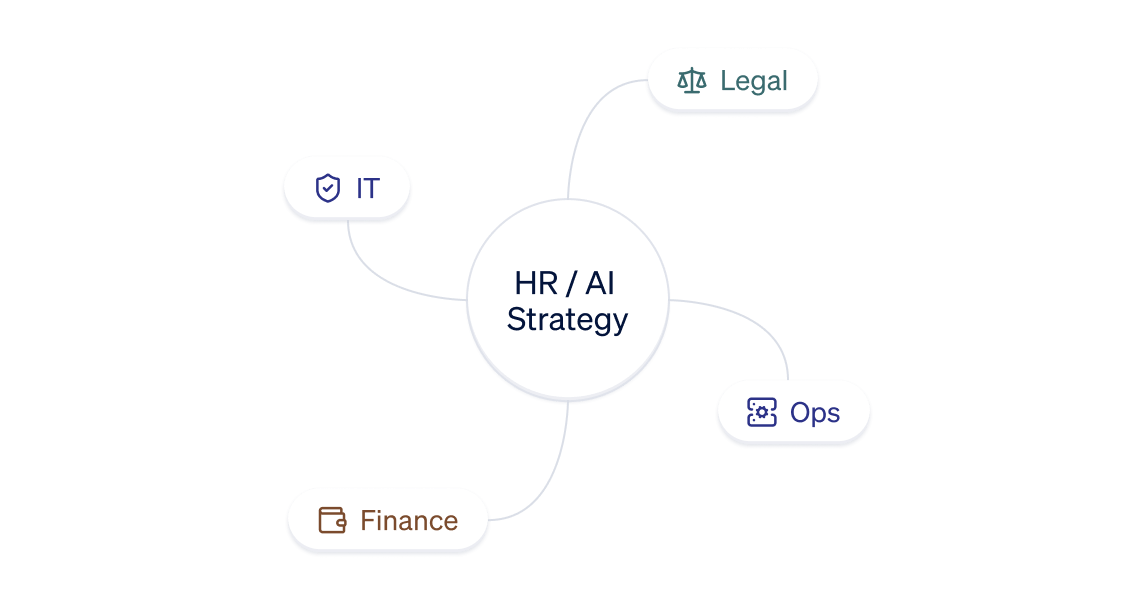
Guiding the Organization's
AI Mindset
A new mindset starts with trust, not fear. HR plays a key role in guiding people through AI with confidence, curiosity, and clarity.
As AI transforms work, employees need more than tools — they need understanding.HR can foster adoption by introducing practical education, addressing fears of job loss, and building a culture where experimentation is safe and encouraged.
Turn curiosity into action
HR can support this desire to upskill by offering real, hands-on experiences—not just generic seminars.
From Fear to Empowerment
Many employees worry that AI will eventually replace them. HR can lead a crucial mindset shift: AI is not here to take jobs—it’s here to take the busywork. By automating repetitive tasks, AI frees people to focus on what matters most: creativity, strategy, and human connection.
To make this shift real, organizations must create a culture where experimentation feels safe.
Employees should be encouraged to try, test, and even fail—because that’s how learning sticks.
Here’s how HR can make that happen:
When people feel supported, curious, and empowered, AI shifts from being an intimidating unknown to a trusted partner in progress.
Tailoring AI Strategy
to Business Readiness
AI adoption isn’t one-size-fits-all. What matters most is starting—with a strategy that fits your business, your people, and your pace.
Some organizations are ready to deploy AI at scale today. Others may need a more phased approach. Wherever you are on the AI journey, your roadmap should reflect your company’s tech maturity, priorities, and readiness.
Balancing Quick Wins & Long-Term Transformation
Taking Action at Every Stage of AI Readiness
No matter where you are in your AI journey, the next steps will look different. Here’s how to move forward:
Key Considerations for
Procuring AI Solutions
Choosing the right AI platform is more than just a software decision—it's a strategic and collaboration challenge.
From scalability to compliance and cost, the right AI decision requires collaboration across HR, IT, Legal, and Finance. This section helps you navigate the real-world questions that shape successful AI implementation.
Identify Your Primary Objectives
Before choosing an AI solution, clarify your goals.
Do you want to streamline recruiting, automate employee support, or improve performance reviews? List specific objectives and define the success metrics you’ll track (e.g., reduce time-to-hire, improve internal mobility).
Clarity here will guide every subsequent decision.

Engage Key Stakeholders from the Start
Bring HR, IT, Legal, Finance, and Executives into the conversation early. Their perspectives will shape how the platform is adopted—and ensure long-term alignment with technical, legal, and business needs.
Having multi-stakeholder input—especially early on—fosters broader support.
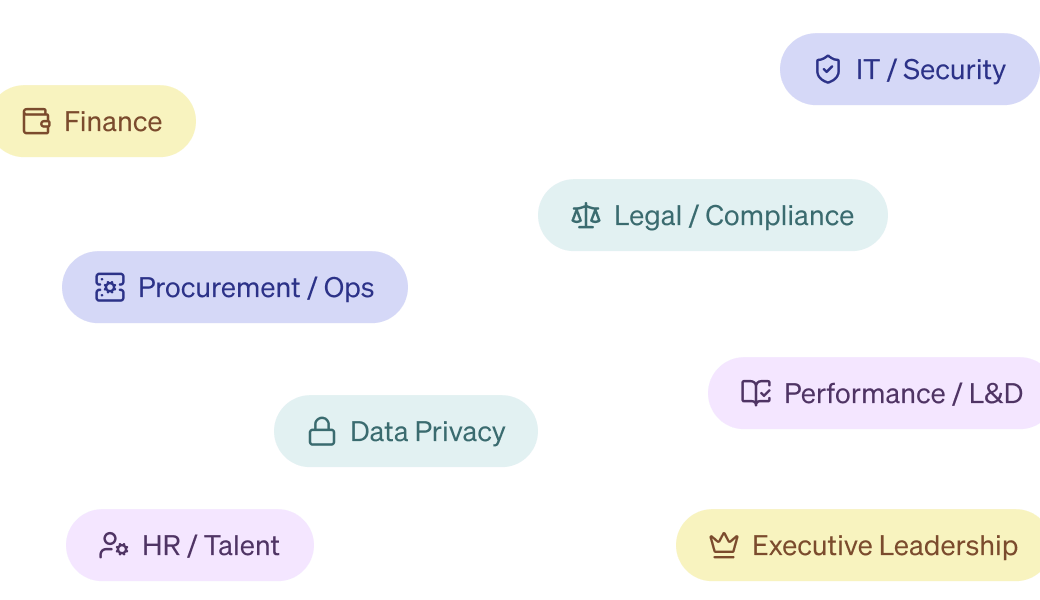
Assess Key Features and Scalability
Ensure the platform fits your current workflows (HRIS, CRM, etc.)—and can scale. Check for high performance under data load, and flexibility for future AI use cases.
Look for tools that serve today’s needs—but also scale with you.
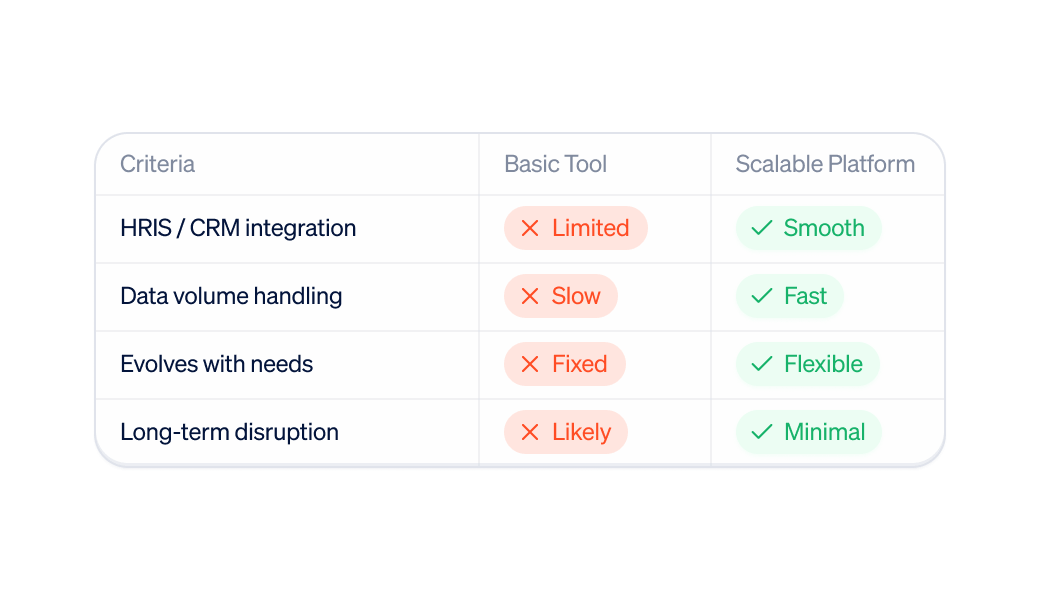
Prioritize Data Privacy, Security, and Compliance
AI solutions must comply with GDPR, CCPA, and other data regulations. Audit how employee data will be handled, stored, and accessed. Involve IT and Legal to align with internal protocols.
Putting these guidelines in writing—then sharing them with all stakeholders—creates clarity and accountability.

Perform a Comprehensive Cost-Benefit Analysis
Factor in not just licensing, but implementation, training, and maintenance costs. Build ROI scenarios over 1–3 years to compare real value vs. sticker price.
The biggest blocker to AI adoption is showing the value.

Vet the Vendor’s Track Record and Support
Don’t overlook a vendor’s track record—implementation is just the beginning.
Ask for client references from similar industries or business sizes. Look for proof of onboarding success and measurable results. A big-name vendor might impress, but a niche one could fit your domain better.
Also assess their innovation mindset:
- How often do they update the platform?
- Are AI models retrained regularly?
- Do they share a clear product roadmap?
Implementation is just the beginning.
Will the vendor offer dedicated support or training resources? Do they have customer success managers you can reach out to?
By involving key departments (HR, IT, Legal, Finance, Execs) early on, you’ll select a vendor that scales with you—and doesn’t just look good on paper.

The Future of AI in HR
and the Workplace
AI isn’t just an add-on technology; it’s fundamentally reshaping how we work. For HR leaders, the future involves bridging the gap between strategic workforce planning and rapid advancements in AI capabilities.
The first step is introducing practical AI education that helps employees feel confident and curious.
From Questions to Career Guidance
AI agents aren't just here to answer questions—they're automating HR operations—taking real work off of HR's plate while improving employee experience and making them feel more supported.
Tomorrow’s AI for HR will:
As AI systems continue to mature, they won’t just respond—they’ll guide. From answering PTO queries to coaching managers in sensitive conversations, AI Agents are becoming essential partners in people operations.
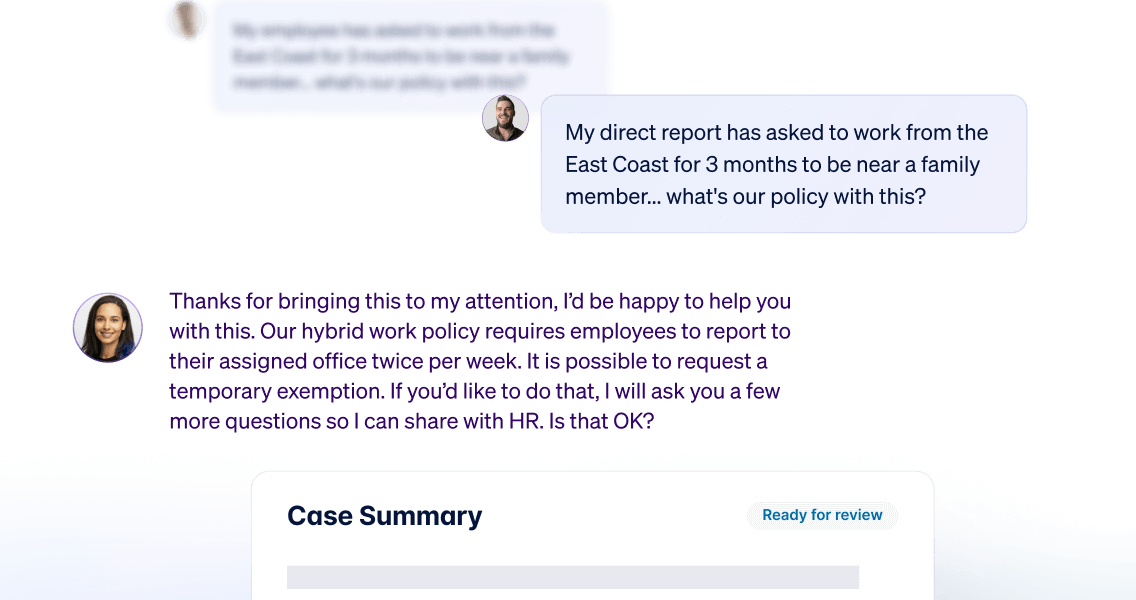
No one has a crystal ball for exactly where AI will be five years from next year—or beyond.
But by investing in adaptable platforms, choosing vendors committed to innovation, and scaling thoughtfully, HR leaders can confidently implement AI solutions that stand the test of time—even in a constantly shifting AI ecosystem.

A Pivotal Moment: HR’s Role in the AI Era
AI is transforming how organizations operate and how employees work. For HR, it’s not just about adapting—it’s about leading. HR leaders have the opportunity to guide this transformation to be both human-centered and business-aligned.
The companies jumping on AI today aren’t just becoming more efficient—they’re becoming more human.


The HR leaders who take action now will redefine their roles as architects of the future of work. It’s not a distant possibility; this change is happening now.



